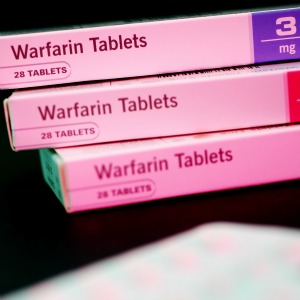GPs should offer more patients taking warfarin the option of a self-monitoring device to help them control their dosing and reduce NHS costs, NICE has recommended in new diagnostics guidance.
NICE experts said offering self-monitoring would help to get more patients on anticoagulation, improve patients’ INR control and lead to fewer clinic visits and better outcomes.
The move could see GPs face a hike in prescribing costs in order to supply the anticoagulation testing strips used in the devices, and one NICE GP adviser has stressed commissioners rather than GPs should be responsible for making sure patients get access to the new devices and support in using them.
According to the new NICE diagnostic guidance, patients with atrial fibrillation on long-term warfarin therapy can be offered to self-monitor their INR Coaguchek XS or INRatio2 PT/INR monitors.
The guidance states: ‘The Coaguchek XS / INRatio2 PT/INR monitor is recommended for self-monitoring coagulation status in adults and children on long-term vitamin K antagonist therapy who have atrial fibrillation or heart valve disease if… the person prefers this form of testing, and the person or their carer is both physically and cognitively able to self-monitor effectively.’
Related stories
GPs told to review aspirin use in patients with atrial fibrillation
What does the NICE atrial fibrillation guidance hold for GPs?
Dr Matt Fay, GPSI in cardiology from Shipley, West Yorkshire, who developed the recently updated NICE atrial fibrillation guidelines, welcomed NICE’s endorsement of self-monitoring, which he said could help ease pressure on services as GPs take on the drive to anticoagulate more patients.
Dr Fay said: ‘The NICE guidance recognises that self-monitoring is accurate and reliable and that warfarin patients prefer the flexibility and reassurance it provides.
‘With the NICE clinical guideline on atrial fibrillation published in June recommending that aspirin is no longer used for stroke risk reduction in people with atrial fibrillation, a further 300,000 people will need anticoagulation. Self-monitoring will reduce this increased burden on hospital and clinic resources.’
Dr Fay told Pulse self-monitoring should be made available as an option to all capable patients, including those who are reluctant to take on warfarin monitoring – and was preferable to simply offering one of the new non-vitamin K oral anticoagulants.
But he added commissioners should make sure the anticoagulation clinics take full responsibility for monitoring and supplying the anticoagulation strips.
Dr Fay said: ‘I think the commissioners need to get on to this, go back to the NICE commissioning guidance on anticoagulation… I don’t think it’s good enough to say to a patient, if you don’t want to be in a non-clinic situation you have to be on a non-vitamin K antagonist because some patients have anxiety about the long-term safety.’
He added: ‘This is a very strong recommendation, so I would hope the device providers will make them more affordable. But it also falls to the commissioners to ensure there are services available that patients can access if they wish to self-test. The warfarin clinic I provide supports self-testing and that clinic provides the monitoring strips to the patients through the clinic.’
NICE – Atrial fibrillation and valve disease: diagnostics guidance DG14

















